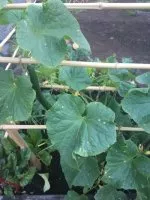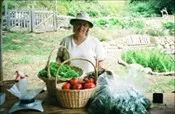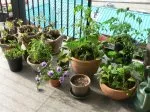Peas
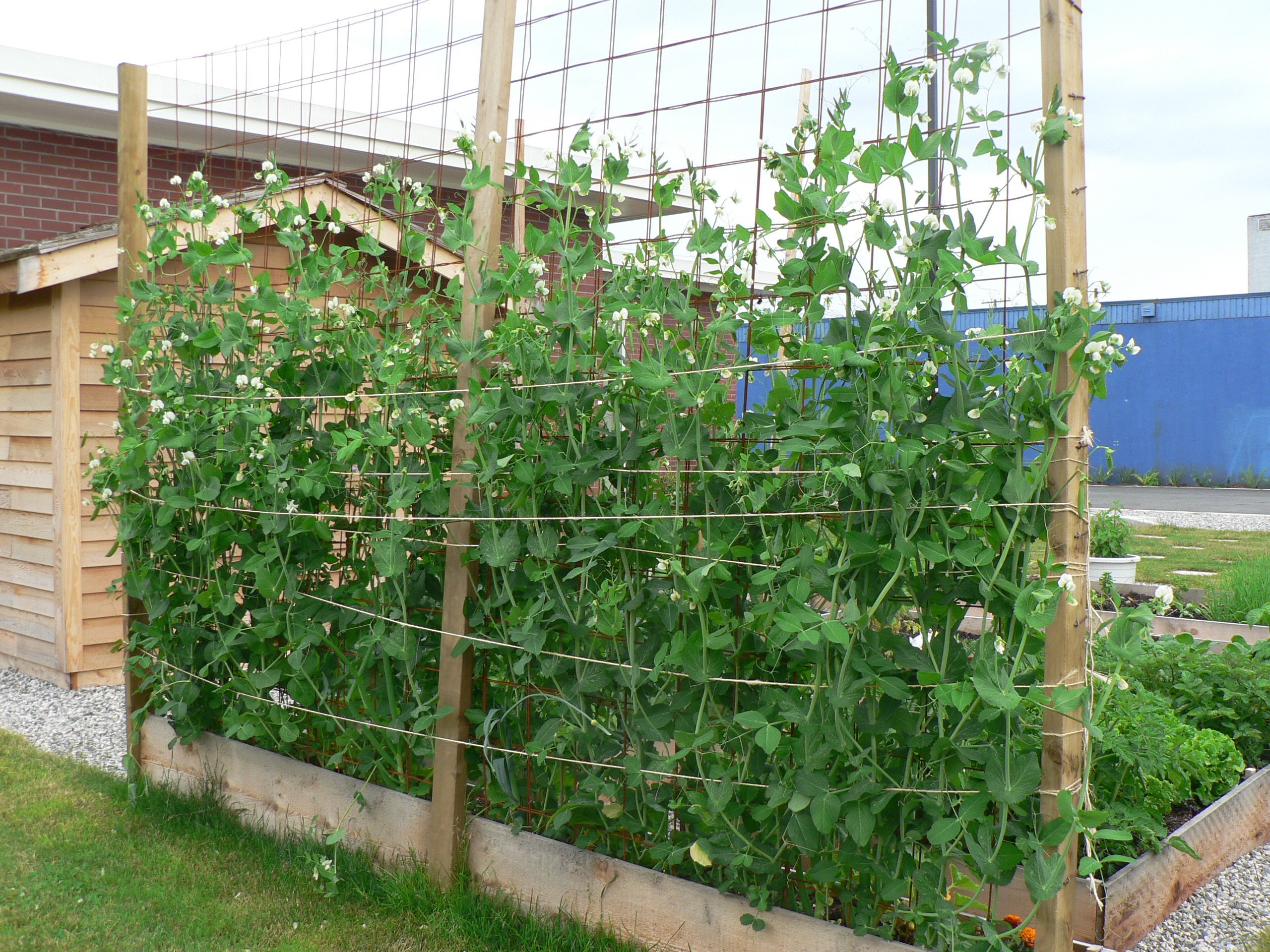 Peas growing on trellis
Peas growing on trellisPeas are a versatile and nutritious vegetable that can easily be grown in home gardens. Whether you have a large backyard or just a small balcony, growing peas is a rewarding experience that can provide you with a bountiful harvest of fresh, delicious peas.
To start growing, you will need to choose the right variety for your location and climate. There are three main types of peas: shelling, snap, and snow. Shelling variety are the most common type and are harvested when the pods have reached their full size. Snap variety are harvested when the pods are still young and tender, and can be eaten whole. Snow variety are harvested when the pods are flat and the peas inside are very small.
This vegetable prefers cool weather, so it is best to plant them in early spring or late summer for a fall harvest. They thrive in well-drained soil that is rich in organic matter. Before planting, it is a good idea to add compost or aged manure to the soil to provide them with the nutrients they need to grow.
When planting, sow the seeds directly into the ground at a depth of about 1 inch and space them about 2 inches apart. If you are planting in rows, space the rows about 18 inches apart to allow room for the plants to grow. They are climbers, so it is important to provide them with support such as a trellis or stakes to help them grow vertically.
Regular watering is required, especially during dry periods. It is important to keep the soil consistently moist but not waterlogged. Mulching around the base of the plants can help retain moisture and suppress weeds.
Info for planting peas:
Botanical Family - Papilionaceae/Pea & Bean Family
Location - Enjoys moderate temperatures and will thrive in partial shade.
Soil - Light, rich, sandy with pH 6. Will tolerate moderate amount of acidity, but the soil should not be over rich in nitrogen.
Soil Preparation - Dig 3 inches of compost or aged manure before planting.
 Peas growing on wood & bamboo trellis
Peas growing on wood & bamboo trellisSeed Info -
- Seed Spacing - 2 inches apart 1-2 inches deep
- Germinate in soil temperature of 5 – 23 C
- Days to Maturity - 100-120 days
Planting Times - Direct seed early in spring as soon as soil is worked. Try planting between July and mid August for a fall crop.
Planting Instruction - Dig a row with the end of your hoe or shovel and drop the peas in. Cover them with soil and pat down the soil.
Companion Planting
- Positive effect: carrot, corn, cucumber, eggplant, lettuce, radish, spinach
- Negative effect: tomato, turnip
Watering - This vegetable suffers most from heat and drought. They require regular watering.
Weeding - Keep weeded while plants are young.
Disease & Insects - Use crop rotation.
Harvest - Shelling: pick full pods every second day to keep plants producing. Snow: pick when flat pods are 3 inch long. Snap: pick when pods are full.
Storage - Can be stored in a plastic bag in the refrigerator for up to a week.
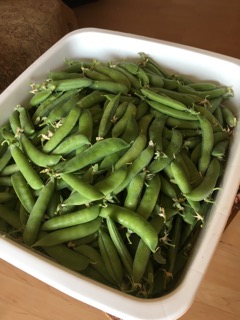 Shelling peas
Shelling peas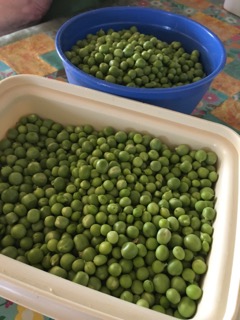 Shelled peas
Shelled peasAs the peas grow, it is important to keep an eye out for pests such as aphids, pea moths, and powdery mildew. These can be controlled through regular inspection and by using organic pest control methods such as neem oil or insecticidal soap.
Harvesting peas is a rewarding experience, as there is nothing quite like the taste of fresh peas straight from the garden. Shelling peas are ready to harvest when the pods are plump and the peas inside are fully formed. Snap peas are best harvested when the pods are still young and tender, while snow peas are best harvested when the pods are flat and the peas inside are very small.
In conclusion, growing peas is a fun and rewarding experience that can provide you with a bountiful harvest of fresh, delicious peas. By following the tips outlined in this article, you can successfully grow peas in your own garden and enjoy the taste of homegrown peas all season long.
Recipe
Spring Peas & Cooked Lettuce
1 small head lettuce
2 tablespoon green onions, chopped
1 teaspoon butter
1 cup fresh or frozen peas
Salt to taste
Pepper to taste
Cut the lettuce into small strips to make 3/4 cup, packed. (Save the remainder for another use.) Sauté the onions and lettuce in the butter over medium-high heat for 1 minute. Add the peas, salt and pepper; stir. Cover the skillet. Cook until heated through, about 2 minutes. Yield: 2 servings
Recent Articles
-
Vegetable Gardening Frustrations: Lessons for a Better Harvest
Oct 29, 24 07:37 PM
Every vegetable gardener knows that while the rewards are sweet, the vegetable gardening frustrations can be a bit bitter. -
Small Space Vegetable Gardening
Sep 23, 24 05:06 PM
Small Space Vegetable Gardening - Tips for growing vegetables in small spaces. -
Why Fall Gardening?
Aug 16, 24 12:24 PM
Fall Gardening: A guide to a Bountiful Harvest.
